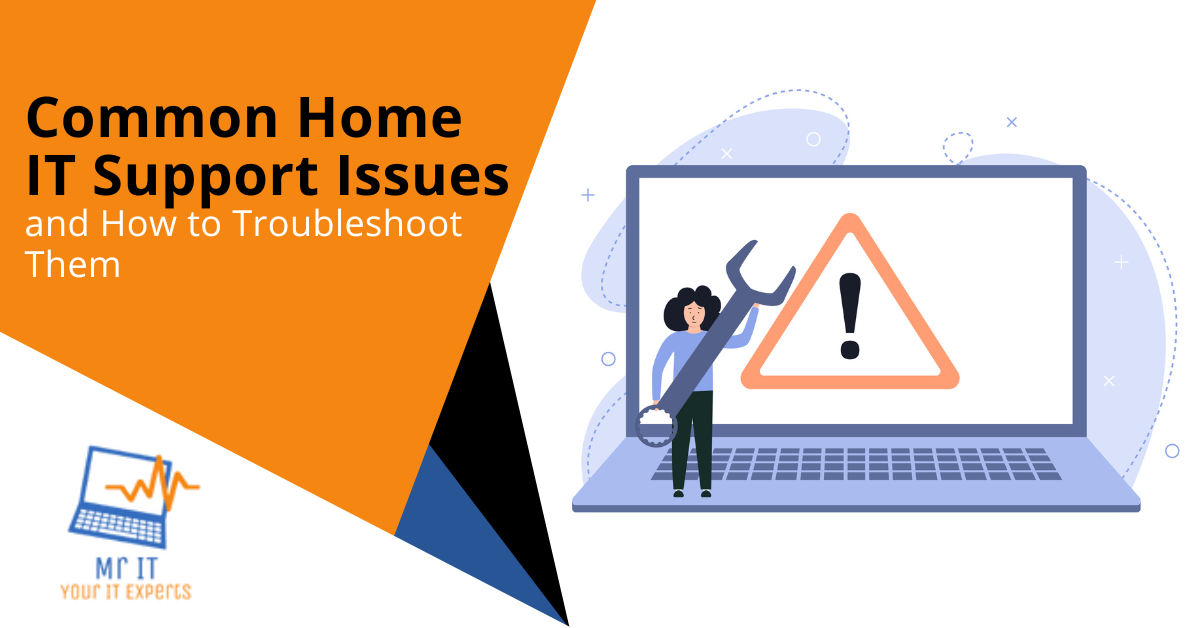As we know 67% of Australians work from home, thereby implying that the number of calls to Computer Repair Companies have significantly increased, and there is bound to be a long queue of IT issues for IT support teams to attend to. So let’s talk about Common Home IT Support Issues and How To Troubleshoot Them
However, you can skip the queue entirely. Many of the problems Computer Repair Companies handle are usually so simple that they can be solved without much knowledge or expertise. Knowing some common home IT support issues and how to troubleshoot them will help you work more efficiently, turn in your work earlier than most, and focus on other issues. You will also be less bothered when a system error or malfunction occurs. Practice makes perfect, after all.
Common Computer Errors You Can Troubleshoot All by Yourself
From a slow, unresponsive computer to a slow internet connection, here are some common issues home IT support issues and how to troubleshoot them:
Accidental Deletion of Important Files
Many have experienced this. While this problem is debatably one of the most frequent, it is practically the easiest to avoid and solve.
Firstly, when you discover you have accidentally deleted some important files, your first stop should be your recycle bin. This will probably be on your desktop, but if it’s not, you can search for it in your search bar.
A good way to avoid this problem is to store important files on cloud storage such as OneDrive or Google Drive. You can download them when you want to edit and upload the edited version. An additional advantage is that you can manage editable files directly; you only need an internet connection.
However, you need to know that files stored in the cloud can still be misplaced or lost due to cyberattacks that target the server, the files themselves, or the host.
Slow Internet Connection
Without internet connections, there probably would be no way to work across multiple devices and locations. In fact, many companies would be out of business.
Hence, a slow internet connection in this digital age can easily reduce efficiency and productivity and induce frustration.
Also, with the greater emphasis on remote work and BYOD policies, there is a greater possibility of having problems and issues on the rise. Here are some ways to troubleshoot these issues
- Reboot The Router
As with many devices, overloading is an issue that can happen many times with your router, especially for people that work for long hours. This causes internet connections to run slower by the minute.
To solve this, switch off your router and switch it on after a while. Give it time to boot properly before connecting your device(s) to continue your work.
- Use Ethernet Cables Instead
Ethernet cables provide a faster and much more stable internet connection than Wi-Fi devices (routers).
Your Computer is Running Slowly
Maybe your computer is taking too much time to carry out your instructions. Then it may be cluttered and needs a cleanse. Close the programs you are running that you do not need. Handle them according to a scale of preference and open only important programs. Task Manager is the tool to use for this task.
There are many programs that are working behind the scenes that you are not aware of. For example, some programs come up as you boot the system. They draw much power from the CPU to run; therefore, remove them if unnecessary. You can also look through Task manager to find these apps and remove them.
Lastly, your PC might be slow because your files are not well arranged. You need to place files in folders for easy disk reading of files. This will, in turn, cause the laptop to read files faster.
Also, another reason for slow computers is the presence of malware. This needs experienced staff support.
Blue Screen Crashing
Commonly called the blue screen of death, this is a Windows OS feature that pops up when a computer runs into an error. It is called a stop error, sometimes indicating that the computer has crashed. A stop error signifies that a driver (or multiple drivers) is malfunctioning and needs to be replaced.
To fix this, all you need to do is restart the device. Read the information that pops up in the event of a blue screen to help you understand where you can find the malfunctioning driver. It can also help you determine the extent of the effect of the blue screen, whether you need a simple reboot or professional help.
Looking To Get Quality IT Support for Your Home and Business? Let Mr. IT Help You!
If you’re looking for quality IT support and related services for your Melbourne area home, then MR IT is just a click or call away. Contact us here to get started.
